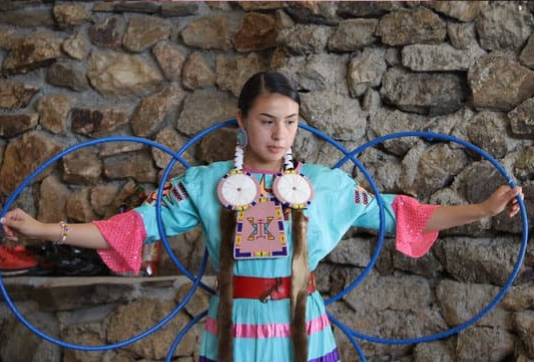
Introduction to Native American Heritage Month in Fashion
Share
November marks Native American Heritage Month, a time to honor the histories, cultures, and contributions of Indigenous peoples in the United States. When it comes to fashion, this month presents a meaningful opportunity to learn, acknowledge, and support Indigenous design — beyond trend cycles and appropriation.
Fashion has long borrowed from Indigenous motifs, textiles, and artistry — sometimes without credit, context or consent. What we’re seeing now is a powerful resurgence of Indigenous creatives reclaiming their narratives and reshaping how “Native design” is understood in modern fashion. (chiefofstyle.com+2Cowan, Liebowitz & Latman+2)
Why This Matters
-
Cultural Ownership & Narrative
Indigenous fashion is more than “inspired by” traditional motifs — it’s about creators from Native communities telling their own stories through garments and design. Many have spoken out about appropriation and the need for authenticity and recognition. (chiefofstyle.com+1) -
Sustainable Roots & Craftsmanship
Many Indigenous designers incorporate heritage techniques, natural materials, and sustainable practices rooted in generations of craftsmanship. (W Magazine+1) -
Visibility & Representation
As the fashion world broadens its lens, Indigenous designers and collaborators are gaining greater visibility — which matters for representation, empowerment, and reshaping industry standards. (Service95+1)
Spotlight on Indigenous Designers to Know
To bring this closer to fashion and give real context, here are a few Indigenous designers whose work exemplifies the intersection of heritage and contemporary design:
- Jamie Okuma (Luiseño / Shoshone‑Bannock / Wailaki / Okinawan) — A trailblazer whose beadwork and apparel collections have been shown in major art and fashion institutions. (Cowan, Liebowitz & Latman+1)
- Lesley Hampton (Anishinaabe / Temagami First Nation) — Focuses on inclusive, body‑neutral fashion that is rooted in Indigenous identity. (W Magazine)
- Dorothy Grant (Haida) — Known for melding Haida form‑line art with tailored fashion pieces, pioneering Indigenous couture. (Wikipedia+1)
These creatives help us see how Indigenous fashion is not just costume or trend — it’s artistry, identity, innovation.
How to Engage Respectfully as a Customer or Brand
As you navigate fashion during this month (and always), here are some thoughtful practices:
- Seek authenticity: Look for labels that are Indigenous‑owned, credit heritage influences, and pay creators fairly.
- Avoid appropriation: Steer clear of designs that mimic sacred symbols or cultural garments without context or respect. The dialogue around appropriation vs. appreciation is significant. chiefofstyle.com+1
- Support sustainably: Consider how materials, craftsmanship, and business practices align with ethical fashion.
- Elevate voices: Feature, follow, and share Indigenous‑owned brands, discuss their stories, and recognize the contributions of Indigenous fashion communities.
What This Means for The Pink Room
At The Pink Room, our style ethos revolves around confidence, inclusivity, and empowerment. During Native American Heritage Month, we’re reminded that fashion is a story‑telling medium — and whose stories are being told matters.
In our upcoming collections and features, we will:
- Highlight Indigenous designers and work with intention
- Ensure any cultural influences or motifs are honored with context
- Encourage our community to make mindful fashion choices
Final Thoughts
Native American Heritage Month invites us all to pause — to consider the roots of our style, the origins of design motifs, and the voices behind fashion. It’s a moment to shift from trend‑driven consumption to informed appreciation.
Fashion can be beautiful, powerful, and meaningful — when done with respect. This month, let’s wear our style and our awareness.
